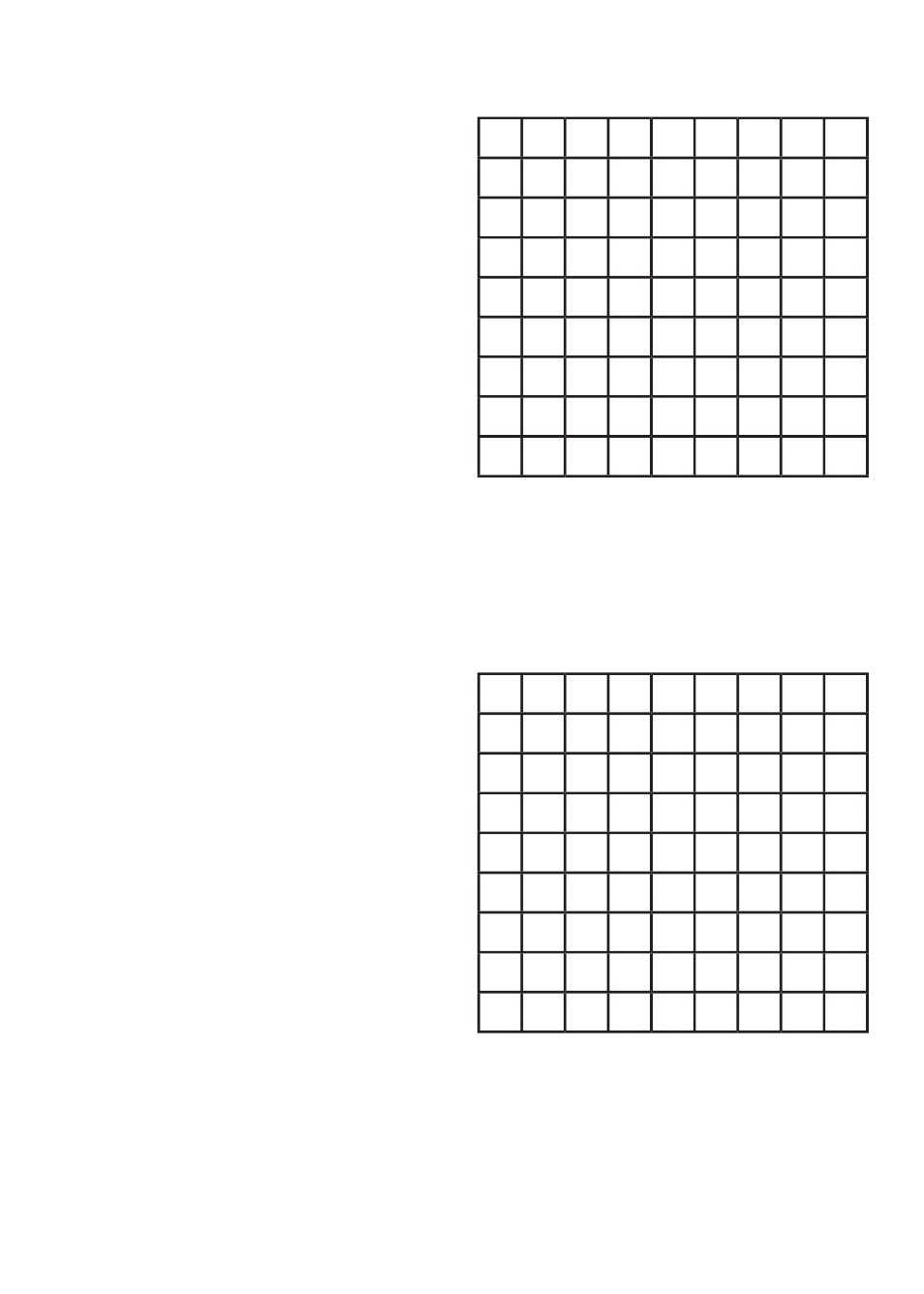EXCALIBUR E108 Einstein Brain Station User Manual
Page 14

14
5.3 S
UMS
The display shows an arithmetic problem.
Use the number keys to type the answer
from left to right, then press ENTER.
A rising or falling sequence of notes tells
you whether you are right or wrong. Then
the next problem appears. After a series of
10 problems, the computer displays your
score.
5.4 N
UMBER
S
QUARES
Your task is to insert the numbers 1-9
into the vacant spaces, in such a way that
the horizontal and vertical sums give
the correct totals. Each number can be
inserted only once.
To insert a number: bring the cursor to the
appropriate square using the arrow keys,
then press the number key.
Numbers already entered can be
“overwritten”. The number in the cursor
square can be erased with CLEAR.
NB: You may “lock” a number (with
ENTER), retract and repeat a series of
entries (using UP/DOWN ), and store
“candidate numbers” (using NOTE).
These features are also used in Su Doku;
they are fully described in § 6.1.2.
6 LOGIC PUZZLES
6.1 S
U
D
OKU
6.1.1 O
BJECT
AND
METHOD
The 9x9 grid is subdivided into nine
“boxes” of 3x3 squares each. At the start
of a puzzle, some of the squares contain
numbers. This example is on Level 5:
The idea is to fi ll the empty squares with
numbers (1-9), in such a way that each
number occurs once in each horizontal
row, once in each vertical column, and
once in each 3x3 box. Here is the solution
to the above puzzle:
To play, bring the cursor to a vacant
square using the arrow keys, then press a
number key to insert the number.
Numbers already entered can be
“overwritten”. The number in the cursor
square can be erased with CLEAR.
4 6 8 2 7 9 1 3 5
5 1 9 8 3 4 2 6 7
7 2 3 1 5 6 8 9 4
8 4 5 9 2 1 3 7 6
9 3 6 5 8 7 4 2 1
2 7 1 4 6 3 5 8 9
6 5 7 3 1 8 9 4 2
1 8 4 6 9 2 7 5 3
3 9 2 7 4 5 6 1 8
7 9 1
5
1
8
2
2 3
6 8
8
9
3 7
9 3 6
4
9
1
4
8
2
4 5 6
